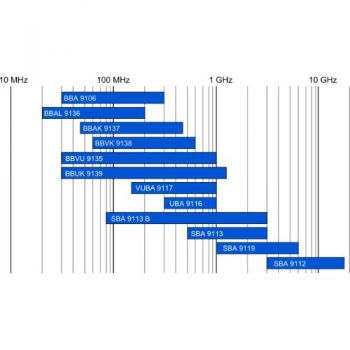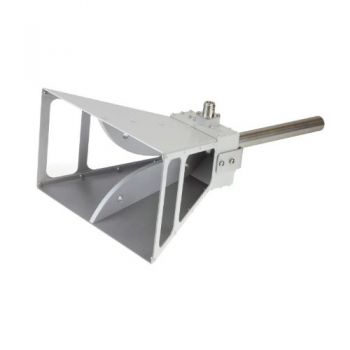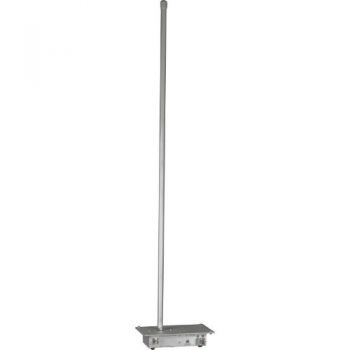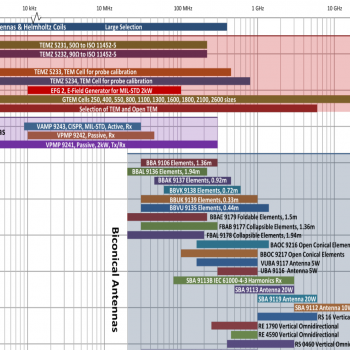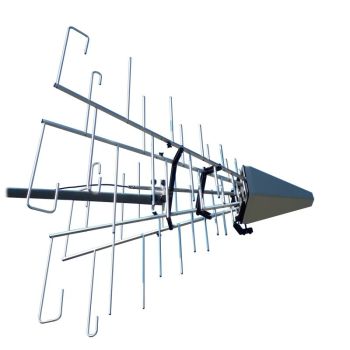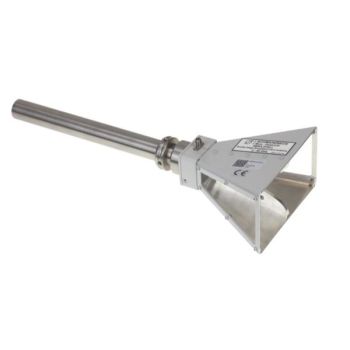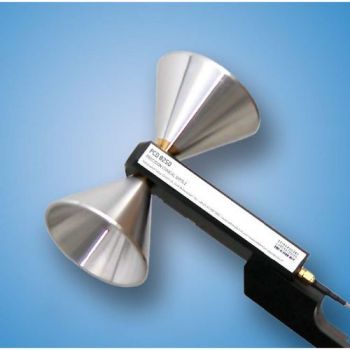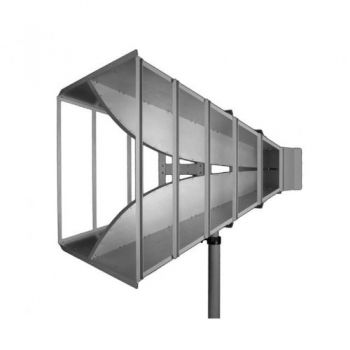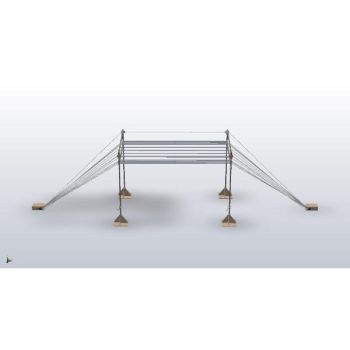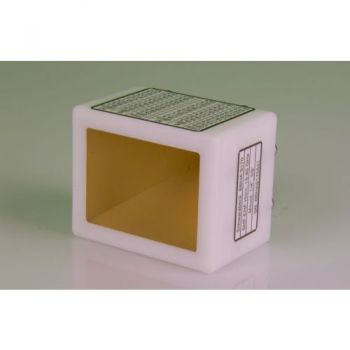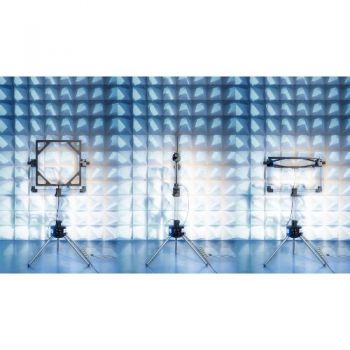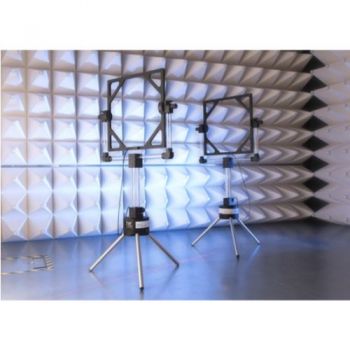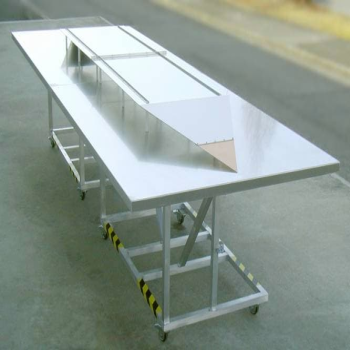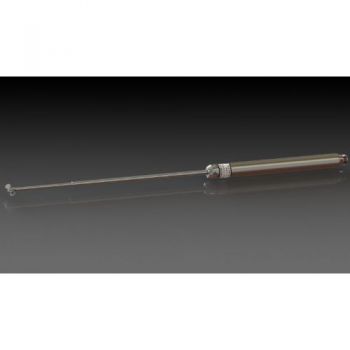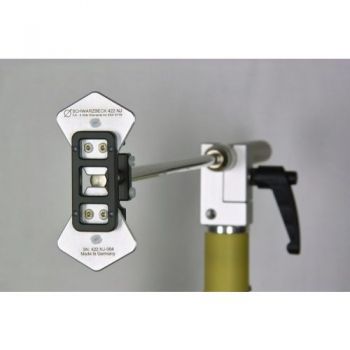
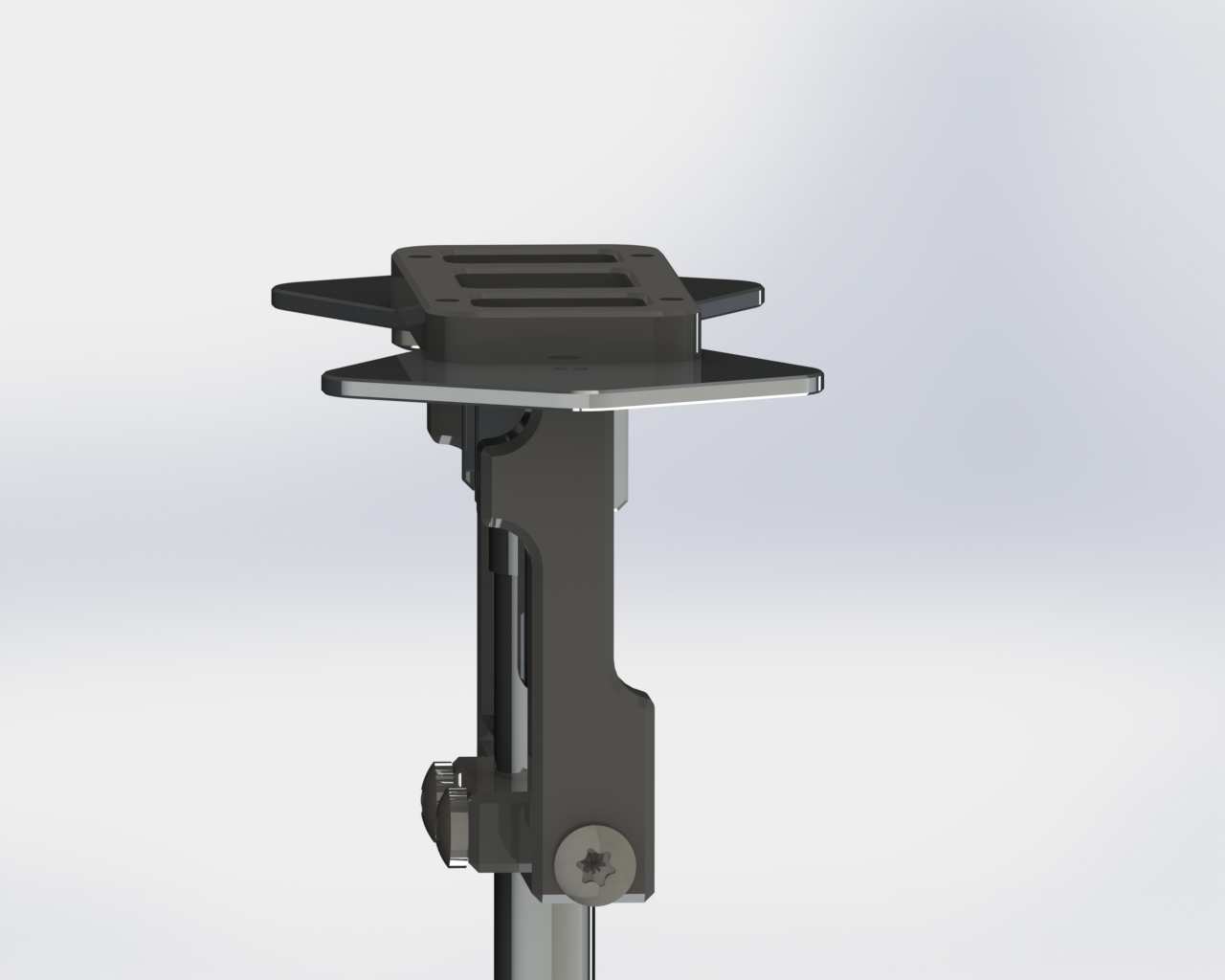
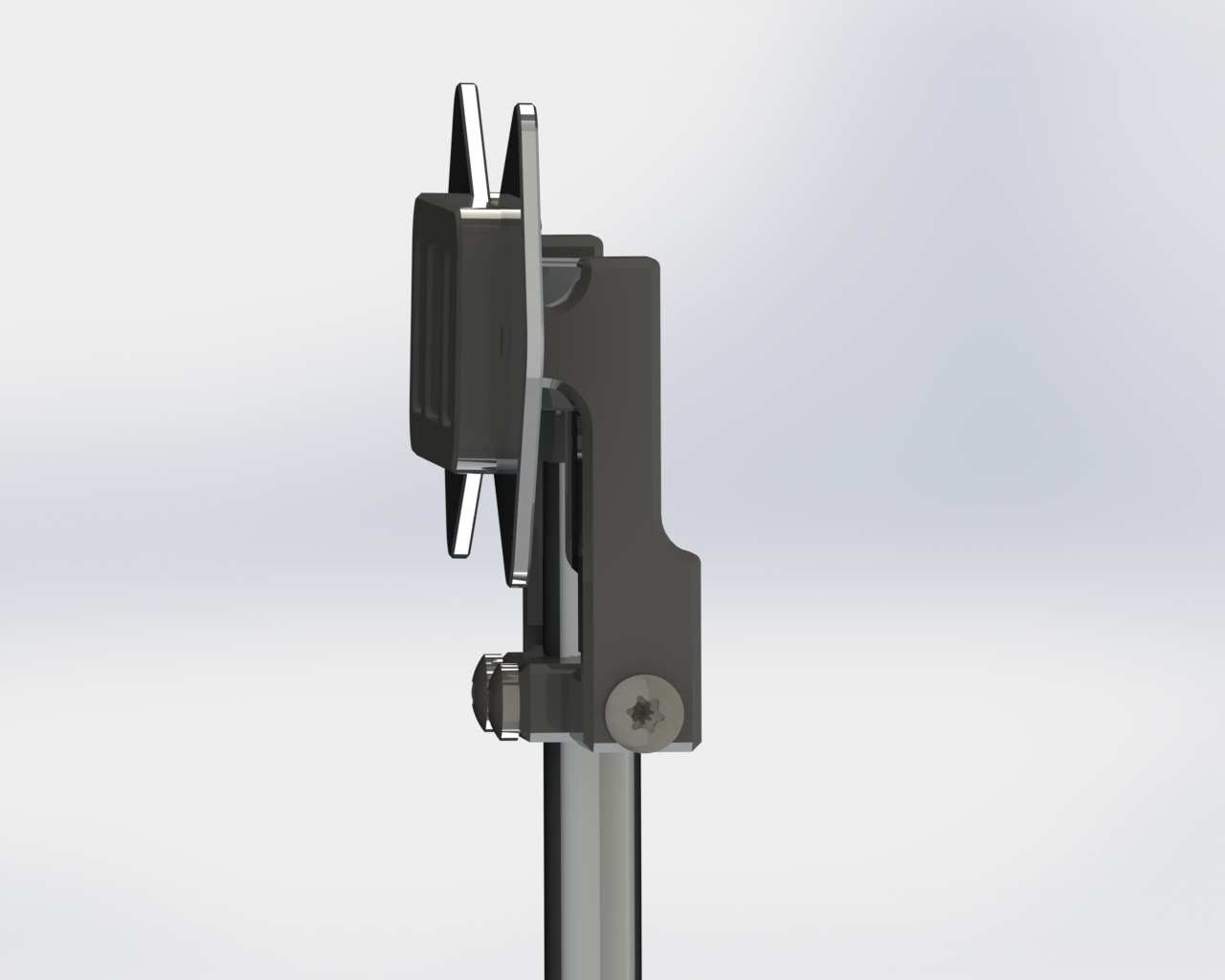
422 NJ Elements for SBA 9119 Small Biconical Microwave Antenna Elements
- Small biconical microwave antenna elements
- 800 MHz - 6 GHz
- Compliant with FMC1278
- Purchase with SBA 9119
- 20 W
422 NJ Elements for SBA 9119 Small Biconical Microwave Antenna ElementsAfter the very successful introduction of nearfield immunity testing with SBA 9113 and the flat elements 420NJ, a demand for higher frequencies arose. While the 420NJ elements are used from 360 MHz to 2.7 GHz, there are now flat elements available, which cover the frequency range from 800 MHz to 6 GHz. The 422NJ-elements are fed using the balun of the SBA 9119 biconical antenna. Instead of the conical elements, spacer sleeves, and the flat 422NJ-elements elements are used. A high-quality plastic bar is used as a fixation of the flat elements in both ways, parallel and perpendicular to the balun rod. Two knurled nuts are used to connect the radiating elements with the symmetrical feed terminals of the SBA 9119 balun. Further, the elements are equipped with a spacer, which provides a repeatable spacing of 5 mm to the EuT's surface. The change of conical elements to flat ones or vice versa requires only a simple screwdriver and is typically done within two minutes. The flat elements can be arranged perpendicular or parallel to the mounting tube of SBA 9119, depending on the available space in the respective application.
Application:
The combination of SBA 9119-Balun with the flat elements 422NJ provides remarkable field-strength levels with moderate transmit power. With 10 Watt transmit power, one can reach field-strength levels of 300 V/m at a distance of 30 mm. This requires only a small adjustment of power over a wide frequency range. The recommended spacing between EuT-surface and 422NJ-elements is 30 mm. This spacing provides both high efficiency and good field uniformity. In most applications, the EuT-surface is divided into a square-shaped mesh, with the mesh width depending on the desired field uniformity. For each mesh crossing, two frequency-swept measurements with orthogonal polarisations are done. This procedure has to be repeated for each remaining mesh crossing until the whole EuT-surface has been covered. Recommended mesh widths are around 30 to 50 mm.
Field Strength
Power
VSWRField Uniformity The measurement of the field uniformity has been made with linear polarized single-axis miniature field probes, which have been specially designed for this dedicated application. In order to obtain meaningful results at close proximities, the size of the used probe must be as small as possible. The size is important for several reasons: the coupling capacitance between miniature probe and 422NJ-elements should be as low as possible, especially at short distances, otherwise, the absolute field-strength reference becomes inaccurate. In order to achieve a satisfying spatial resolution, the probe size has to be small enough to resolve a spatial step size of 10 mm. For the measurement of the following diagrams the miniature probe was scanned in x- an y-direction (xy-plane in 10 mm steps each and at a constant distance d. This means that the miniature probe was scanned in a parallel plane to the xy-plane over an area of 12 cm x 20 cm, separated by the constant distance of d= 25 mm. The horizontal axis shows the x-coordinate of the probe, the vertical axis the y-coordinate with the relative field-strength value indicated as color. All diagrams come with an identical color scale, which is normalized to 0 dB. The normalization was made with the miniature probe being centered in front of the 422NJ-elements. The readability is improved by contour lines, which are available for relative field-strength levels of -3 dB, -6 dB, and -10 dB. There is field uniformity data available in another file from distances between d = 10 mm up to d = 50 mm in 10 mm spacing-increments. On the following pages a field uniformity example for the distance of d = 25 mm with frequency steps of 200 MHz from 1 GHz to 6 GHz is given. The reference plane to measure the distance is the aluminum surface of the 422NJ-elements, which faces towards the EuT.
Flat elements for SBA 9119
Center Fieldstrength SBA 9119 + 422 NJ with 1 W Transmit Power
Power Requirement for constant fieldstrength |



